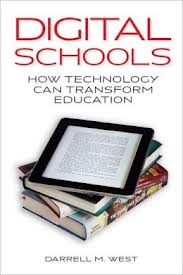The memory is hazy, but the term is familiar from childhood. Kids who behaved badly were threatened with reform school. I just read up on the term. Sure enough, it was a teacher’s idle threat—reform schools were popular beginning just before the Civil War, and mostly fell apart nearly a hundred years ago. Reform school was a place to send incorrigible boys while keeping them out a adult prisons, where they were abused, transformed into criminals, and often, both.
“Reform school” is one of the few English phrases that might be a tesseract—a multidimensional geometric shape (square is to cube as cube is to tesseract). When the word “reform” is used as a verb, not an adjective, it leads the way to the school reform.
We can flip that term on its head, too. Like reform school, public schooling is an ingenious idea born of a far away period when families were in need of literacy, and citified behavior. Learn to read, write, speak and behave properly, and, odds were, you would find worthwhile, long term employment and economic success.
Looking at the term today, school reform feels anachronistic. Henry Ford’s comment about faster horses comes to mind (“If I had asked people what they wanted, they would have said faster horses”), even though he never said or wrote those words. We accept school as a permanent institution because we cannot imagine a better modern solution. What else would we do with 50-55 million kids every day? Our economic system is now based upon parents who, by and large, work every day to support increasingly expensive lives. So we think in terms of constantly improving, perhaps even reforming (that is, re-forming, or forming in a new way) our schools.
Perhaps the phrase, and the concept, or reformed schools are too limiting. Perhaps the generation of children and teenagers are as diverse in their interests as they are in their heritage. Perhaps their insistence upon trusting the video and social media on their cell phones is, in fact, a very powerful tool for customized learning.
Perhaps children and teenagers have already bypassed their concerned parents’ desire or need to reform school. Instead, many are already pursuing the divergent, often disruptive, path to learning on their own. Or, perhaps, reformation into classrooms with rows of permanent desks, all eyes on the teacher in the front of the room, really is the best way to train young minds.
Or should we be concerned, instead, with learning reform, or, more clearly, learning reorganized, recontextualized, re-formed, or just plain reformed? How might that look? Would we move from the well-intentioned IEP to a celebration of well-organized self-directed learning?
How does any of that marry the once all powerful needs of industry? Or is everything just moving too darned fast for those needs to matter in a world where digital changes everything much faster than contemporary educators can teach? Are students reforming the beliefs, knowledge and understanding in their minds with a reformulated version of a teacher? Perhaps the key is teacher reform?
Finally, there are the strange bedfellows, curiosity and education. The former is associated independent thinking—parents encourage children to “think for yourself.” The latter is concerned with consistent results for the good of society—teachers encourage children to “learn the curriculum” which allows limited opportunity and encouragement for individual thinking, self-expression, divergent paths, and imagination. We certainly need to regenerate the curiosity and creative thinking that becomes lost in so many students, so many children, as the education system helps them to mature. In short, we ought to re-form or reconstitute curiosity in every grade and in every way. So we might be attempting to reform curiosity, and maybe that’s wise because reforming education sounds like something that might be impossible to do because school boards, principals, teachers and other educators are not trained to think or behave as reformers in any sense of the term.
Reform school? Sure, but let’s not spend all of our intellectual capital on a movement that digital transformation will eradicate with or without our help. Reform learning? Sure, and if we don’t get to it soon, Google will take care of the problem for us, or a Facebook might. And, in any case, kids are already reforming learning, on a massive scale, without adult supervision. Reform the teachers? Their own political solidity may assure the demise of a once noble profession. Reform education? Read your Clayton Christensen—this is an industry ripe for a massive disruption because the incremental variety almost always leads to a forgotten enterprise. Re-form curiosity? You bet! Encourage students to pursue their own paths, albeit in an organized way! Sounds good. Also sounds like, well, like college on a very good day.

Above, John Dewey, who was doing a lot of writing and thinking about these ideas long before I was born. He wasn’t the only one, of course, and there have been many since, but some of Dewey’s ideas continue to resonate. From PBS: “To Dewey, the central ethical imperative in education was democracy. Every school, as he wrote in The School and Society, must become “an embryonic community life, active with types of occupations that reflect the life of the larger society and permeated throughout with the spirit of art, history and science. When the school introduces and trains each child of society into membership within such a little community, saturating him with the spirit of service, and providing him with instruments of effective self-direction, we shall have the deepest and best guarantee of a larger society which is worthy, lovely and harmonious.”



